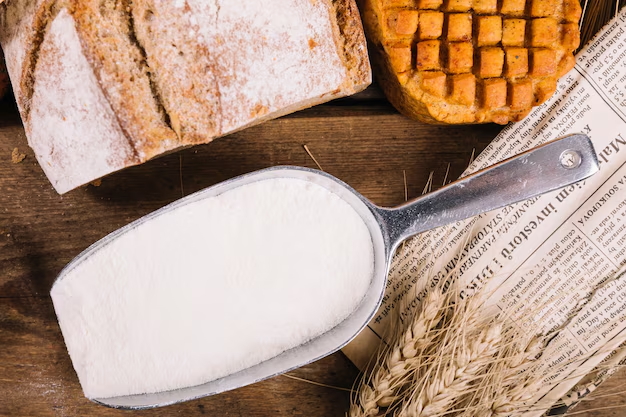Should You Store Sugar in the Refrigerator? Unraveling the Sweet Truth
Have you ever wondered if storing sugar in your refrigerator is a good idea? It seems like a simple question, but the answer involves a fascinating exploration into food storage, sugar's properties, and practical home organization. Let's journey through sugar's relationship with temperature, moisture, and storage techniques to provide you with a comprehensive guide on whether your granulated goodness belongs in the fridge.
Understanding Sugar's Nature
What Is Sugar?
Sugar is a carbohydrate found in many foods and drinks, occurring naturally in fruits and vegetables or added to enhance flavor. The most common forms include granulated sugar, brown sugar, and powdered sugar. Each has unique characteristics affecting how it interacts with moisture and temperature.
Is Sugar Hygroscopic?
Hygroscopicity refers to a substance's ability to absorb moisture from the air. Sugar, notably granulated sugar, is hygroscopic. This property means it readily attracts water molecules, leading to clumping if not stored properly. Understanding this key characteristic is vital when considering how to store sugar effectively.
The Refrigerator Debate: Pros and Cons
Benefits of Refrigerating Sugar
- Pest Prevention: Keeping sugar in a refrigerator can protect it from pests such as ants and insects.
- Moisture Control: In drier climates, refrigeration might provide a controlled environment that prevents your sugar from becoming rock-hard or too sticky.
Drawbacks of Refrigerating Sugar
- Clumping and Hardening: The high humidity found in refrigerators can make sugar clump or harden, particularly if not sealed properly.
- Absorption of Odors: Sugar can absorb odors from other foods stored nearby, altering its flavor.
- Inconvenience: Refrigerators consume energy, and using them for storing non-perishable items can sometimes be impractical.
Sugar Storage Best Practices
Ideal Storage Conditions
For optimal longevity, sugar is best stored in a cool, dry place. Here are some universal tips to maintain sugar's quality:
- Use Airtight Containers: Seal your sugar tightly to prevent exposure to humidity and pests.
- Room Temperature: Store sugar at room temperature to maintain its texture and culinary properties.
Specific Sugar Types
- Granulated Sugar: Store in a dry container, maybe with a food-safe desiccant to absorb excess moisture.
- Brown Sugar: Keep airtight to maintain moisture content, or add a terra cotta sugar saver to preserve softness.
- Powdered Sugar: Much like granulated sugar, it should be stored airtight to prevent clumping.
A Broader Look at Refrigeration and Food Storage
When Does Refrigeration Work?
Refrigeration is a powerful tool for prolonging the freshness of many foods, like dairy, meats, and certain produce. Understanding when and why to refrigerate can enhance your food storage practices.
- Fresh Produce: Notable for preservative efforts, particularly for leafy greens and perishable fruits.
- Leftovers: Essential for slowing bacterial growth and preserving flavor and texture.
- Dairy Products: Prevents spoilage and maintains taste quality.
Refrigeration as a Storage Strategy
Using the refrigerator as part of a larger storage strategy depends on your kitchen environment, frequency of use, and storage space. Here are some additional considerations:
- Availability of Space: If limited space is an issue, conserving room for perishables should take priority.
- Energy Consumption: Keeping non-perishable items like sugar in the fridge may not be the most energy-efficient choice.
Troubleshooting Common Sugar Storage Issues
Dealing with Clumped Sugar
If your sugar has clumped, don't worry! Here’s how you can restore it:
- Granulated Sugar: Break up clumps using a rolling pin or kitchen mallet when inside the bag.
- Brown Sugar: Revitalize hard clumps with a damp paper towel; seal together in a bag for a few hours.
Protecting Sugar from Pests
Prevent pests through cleanliness and smart storage:
- Seal It Tight: Use pest-proof containers, such as glass or hard plastic.
- Storage Location: Keep sugar in a pantry or cupboard away from heat and light, which can attract insects.
Summary Section: Smart Sugar Storage Tips 🍬
Here's a quick overview of storing sugar efficiently:
- 🧂 Airtight is Right: Always use sealed containers to protect from moisture and pests.
- 🌡️ Room Temperature Rules: Store sugar at room temperature to preserve quality.
- 👍 Strategic Usage: Use fridge space for genuine perishables when considering practicality and energy costs.
- 🔍 Review and Revive: Address clumping or hardening with simple techniques like rehydrating brown sugar or breaking granulated sugar.
- 🐜 Pest Prevention: Opt for pest-proof storage solutions and maintain cleanliness in storage areas.
Closing Insights
The decision to refrigerate sugar boils down to personal preference, environment, and specific needs regarding pest control. For most households, storing sugar in a cool, dry, and airtight location at room temperature is sufficient and optimal. Exploring these intricacies of sugar storage encourages a deeper understanding of food preservation, empowering you to make informed decisions in your kitchen.
In rethinking how to store sugar, you're engaging in a small yet meaningful way to ensure your food supplies remain fresh, functional, and flavorful. As we've explored, sugar's storage doesn't demand refrigeration, but rather simple attention to moisture and sealing—a sweet reminder that knowledge is key to culinary success.
